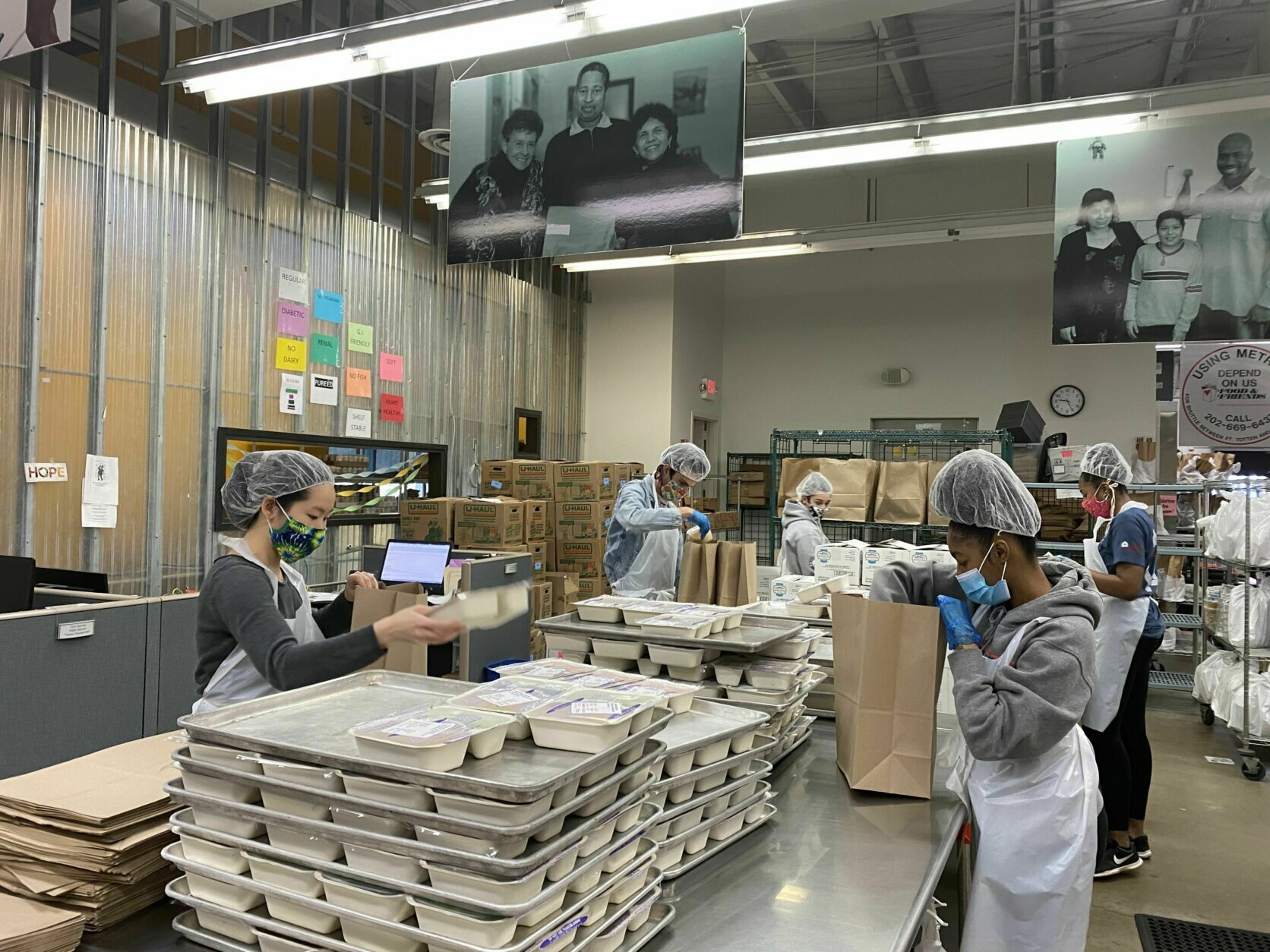
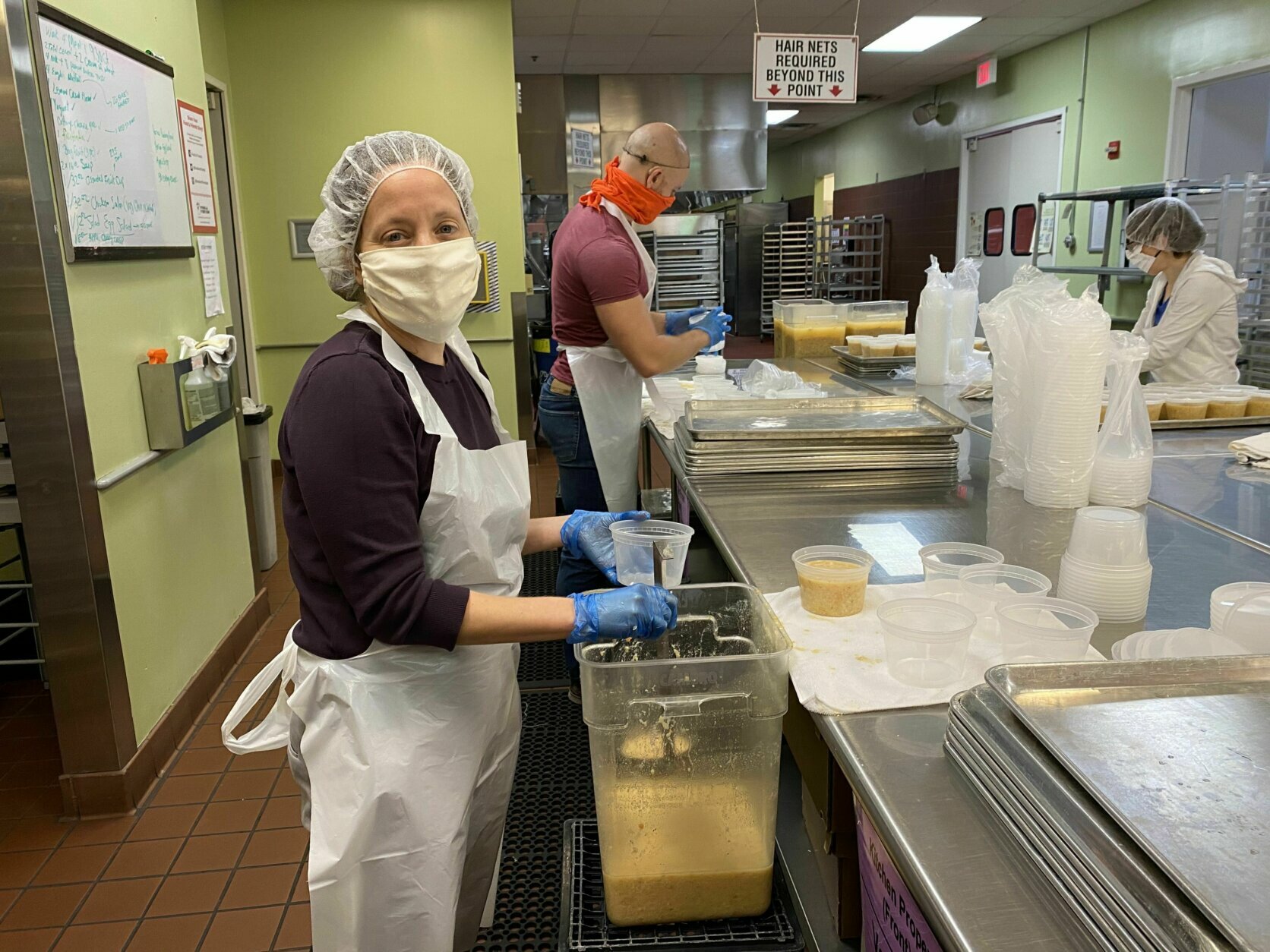
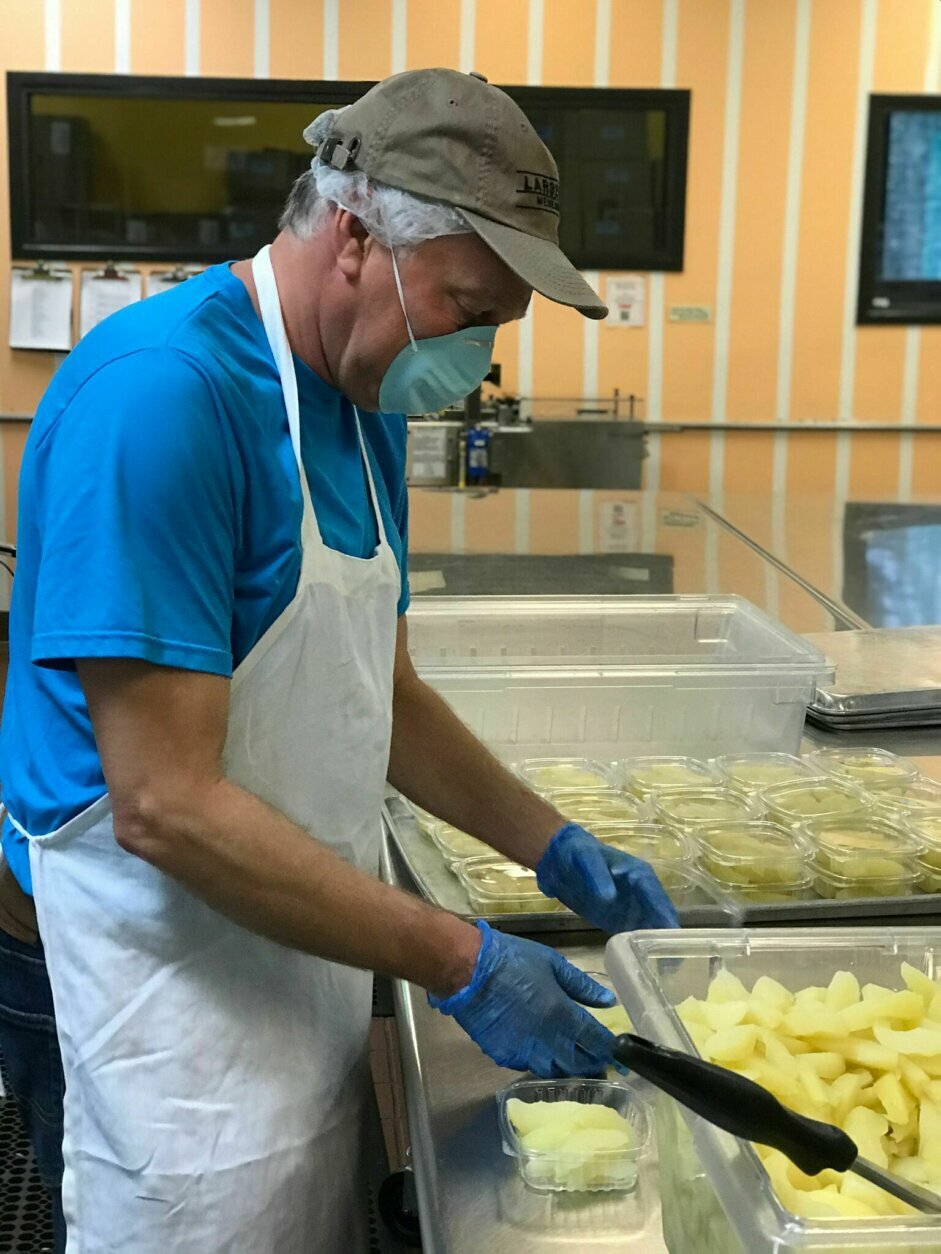
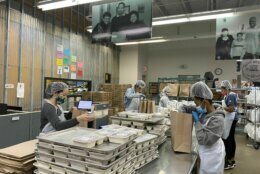
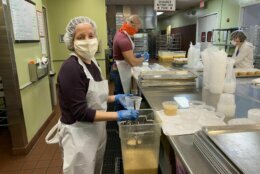
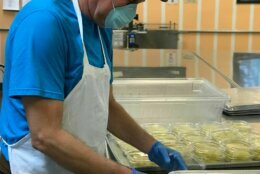
Nonprofit organizations across the D.C. metro region are being relied on now more than ever, and that’s especially true of nonprofits whose mission is to serve those at the greatest risk of infection from COVID-19.
So how do you do that with fewer volunteers?
That’s the problem with which Food & Friends — a nonprofit kitchen in Northeast D.C. that provides meals to people suffering from cancer, HIV/AIDS and other life-threatening illnesses — has been dealing.
Traditionally, Food & Friends delivers prepared meals to thousands of people around the region three days a week. Normally, about 60 volunteers would be relied on to help cook and prepare meals, and then deliver them to people. But these days people in need are getting those deliveries once a week.
“We’re just delivering the same amount of food, though less often,” said Carrie Stoltzfus, executive director at Food & Friends. “Just to reduce the interaction between staff and volunteers and clients.”
- Sign up for news alerts from WTOP
- As coronavirus spreads, organizations across region seek volunteers
- DC, Md., Va. leaders issue new orders, extend order deadlines
- Where to get tested for COVID-19 in the DC region
- Coronavirus test results in D.C., Maryland and Virginia
How the food gets prepared is a lot different now too. These days, about 20 volunteers a day total go through the kitchen off Riggs Road near the Fort Totten Metro station between 6 a.m. and 8 p.m. That’s a far cry from how many used to march through.
“Working with a lot fewer volunteers, using some staff to supplement that,” Stoltzfus said. “All the work stations are marked with 6-foot markers so people have that visual of where they’re supposed to be standing and knowing how far apart they have to be.”
Anyone who helps prepare the meals has to wear hairnets and gloves already, and now they’re wearing masks too.
All of those steps being taken are happening at a time when more and more people are asking for help.
“We took on about 60% more new clients in March than we did March a year ago,” Stoltzfus said.
“We are seeing more referrals for people who have all of the health issues that were problems in our country and in our area before this. Cancer, HIV and AIDS, heart failure, kidney failure, and those are the people for whom it’s more important to stay at home right now — so our services are helping them do that, and I think that’s why we’re getting more referrals.”
How to volunteer at Food & Friends.








